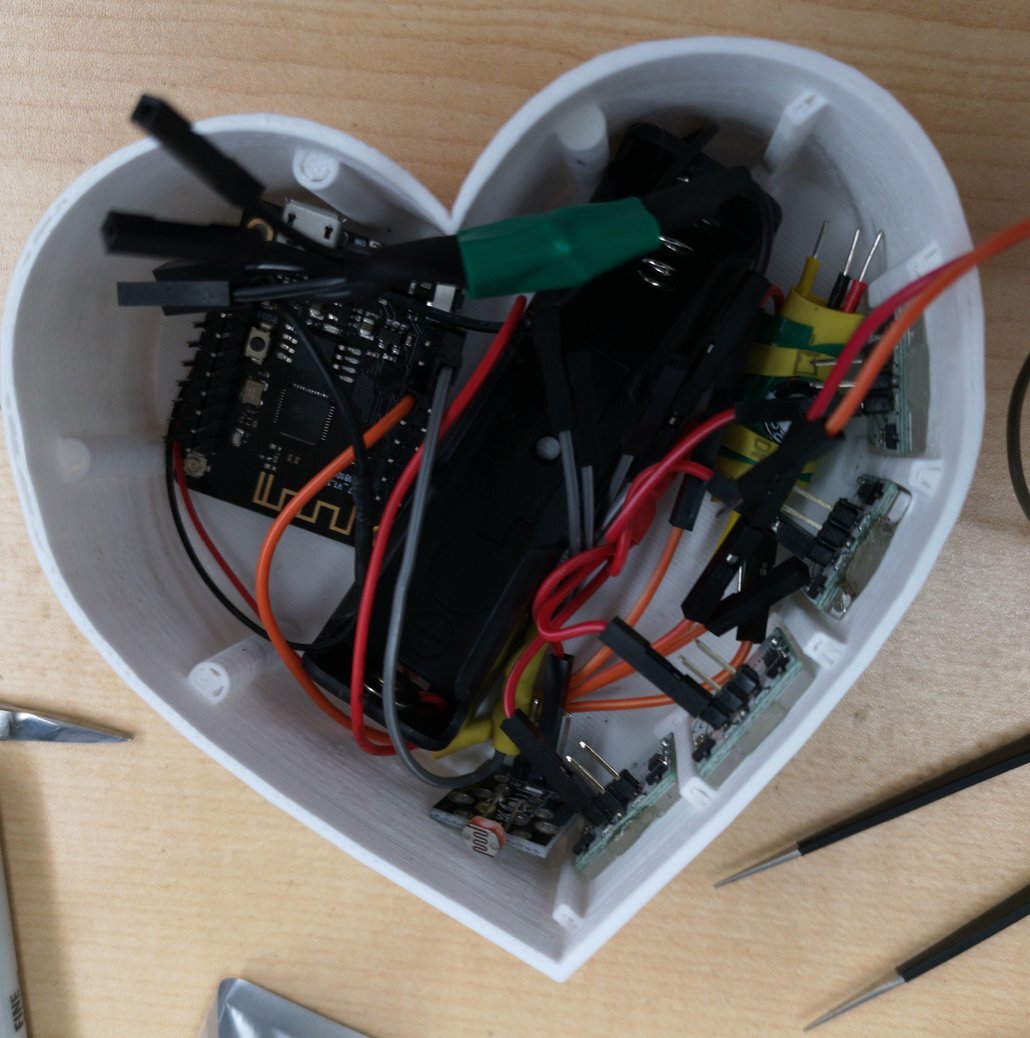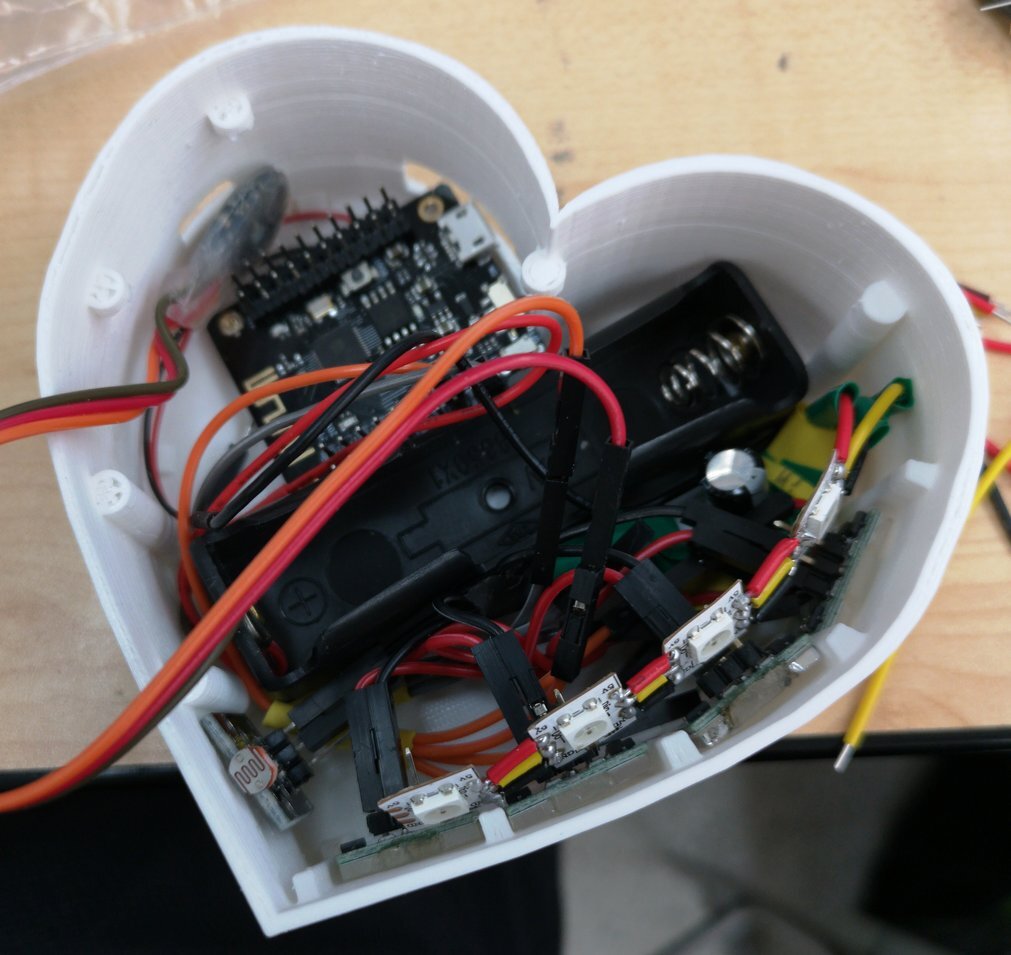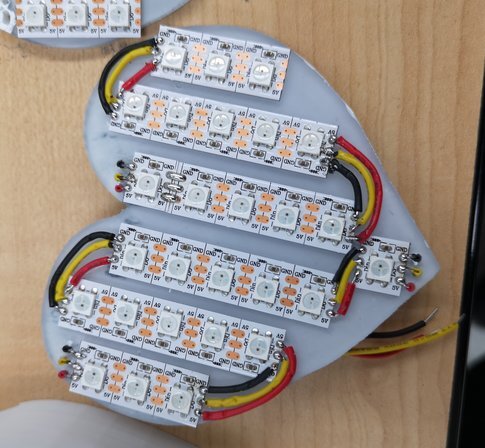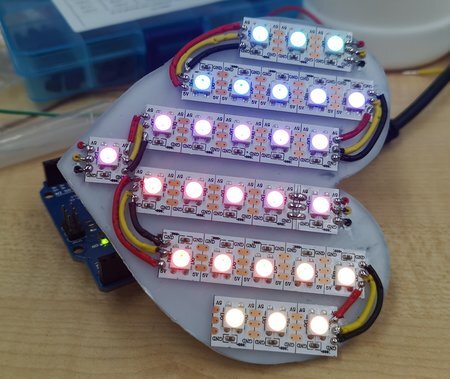ESP32 Project Update 3
april 4, 2019
New 3D printed cases came in today, courtesy of my friend who was willing to print them on his printer. The new case has the holes for power and the heart sensor pre-cut this time, which lets me do a lot less work cutting those holes out. It also fixes a majority of the spacing and fitting issues that I had with the previous iteration of the case, where the battery case didn't fit very well and where there was an extra slot for a touch sensor. Some of the support columns have also been changed from solid columns into only top bits, which allows the case to still support the lid, but saves a lot of interior space.

The first iteration of the case.

The second, newly improved iteration of the case.
You might notice that the button LEDs don't look much like the LEDs from the last post. This is because while I tried to solder the original neopixel nano LEDs, the solder actually melted on the LED end, which meant that the whole thing just broke while soldering. I replaced these with WS2812B LEDs, which are the same ones that I'm using for the main LED array. While not nearly as cool as the original ones, using the same LEDs will probably make troubleshooting and writing code far easier, while these larger LEDs are also quite a bit more robust and tested by the community. These chains of LEDs will be hot-glued to the side of the case some distance away so that the light diffuses properly.
Besides the new case, I've also finished placing and soldering the first of the heart-shaped LED plates, which took about 2 hours of continuous work to do. These come complete with a 1000μF capacitor and a 470Ω resistor attached to the power and signal lines, respectively, so that the whole thing is modular and can be easily tested on its own (also so that I don't forget them later on). The capacitor is attached in parallel across from power to ground, and smooths out any power spikes from the LEDs, while the resistor reduces the noise on the data line. This module was then tested with an Arduino, again with the FastLED library.

Finished LED module.

LED Module being tested.